A good sniper can damage enemy’s morale by taking out key personnel. They can stop a unit in its tracks. But for a good sniper a gun with an eagle sight, deadly impact and a monstrous fire power is essential. Today we have rounded up Top 10 Sniper Rifles of all times.
No 10. M24 (American
Calibre: 7.62x51mm NATO (.308 win)
Operation: Bolt Action
Feed: 5-Round internal magazine
Weight: 12.1 lb (5.49 kg) empty without telescope
Length: 43in (1092mm)
Sights: 10×42 Leupold Ultra M3A telescope sight (Mil-Dots),
plus detachable emergency iron sights. (Redfield Palma International)
Barrel: 416R Stainless Steel, 24″ length, 1:11.2″ twist, 5 radial land grooves
Stock: HS Precision – adjustable length.
Max Effective Range: 800 meters (875 yards)
Expected Accuracy: 1 MOA with M118
.5 MOA with M118LR
The M24 Sniper’s Weapon System (SWS) represents a return to bolt action sniper rifles by the US Army. As in the USMC M40A1, the M24 uses the Remington 700 action, although the reciever is a long action made for adaptation to take the .300 Winchester Magnum round. The stock (HS Precision) is made of a composite of Kevlar, graphite and fibreglass bound together with epoxy resins, and features an aluminium bedding block and adjustable butt plate. A detachable bipod (Harris) can be attached to the stocks fore-end. The metal finish is powder coated for extreme durability
The rifle had a very quick development cycle as the US Army had decided it wanted to get snipers back into the US Army and was in the process of developing the B4 identifier and the school to award it. There was a major short fall of M21′s which was the standard sniper rifle at that point of time and the Army figured it would need 10,000 sniper rifles of which they didn’t have nearly that many M21′s. So a new sniper rifle was developed at the same time and it was done in a record 22 months. The Weapon System Matrix Manager for the M24 was Major John Mende and he explains that the long action actually had nothing to do with the ability to convert to a .300 Win Mag but was a product of that quick development time. The rifle was intended to be chambered in the .30-06 as the -06 was a type classified munition for the Army unlike the .300 WM at the time. They wanted to have a high power load for the .30-06 eventually developed. As development of the system was moving forward they discovered that there was not enough .30-06 ammo in a single lot in the Army’s inventory to test and develop the system so they quickly changed to the 7.62x51mm NATO (308 Win) and left the action the same as there was not enough time for the manufacturers of the stock and floorplate to make the change to short action. They also fully believed they would later do a product improvement update and convert all the M24′s to .30-06. The fact that they could convert them to .300 Win Mag was an unexpected benefit to the SF groups and was never actually designed into the system.
No 9. SR25 (American)
Knights SR-25 rifle, civilian version with 20″ barrel
Knights SR-25 carbine, civilian version with 16″ barrel and telescopic buttstock
Type Sniper rifle
Place of origin United States
Service history
In service 1990
Used by See Users
Wars Afghanistan War, Iraq War, 2006 East Timorese crisis, 2nd Intifada
Production history
Designer Eugene Stoner
Manufacturer Knight’s Armament Company
Variants SR-25 Enhanced Match rifle, with 20 in (510 mm) barrelSR-25 Enhanced Match Carbine, with 16 in (410 mm) barrel and M110 flash suppressor
Specifications
Weight Match Rifle 10.75 lb (4.88 kg),
LwMatch 9.5 lb (4.3 kg),
Carbine 7.5 lb (3.4 kg),
Sporter 8.75 lb (3.97 kg)
Length 1,118 mm (44.0 in)
Barrel length Match Rifle 24 in (610 mm)(also LwMatch & Sporter 20 in/510 mm, Carbine 16 in/410 mm)
Cartridge 7.62x51mm NATO
Action Gas-operated, rotating bolt
Rate of fire Semi-automatic
Feed system 10 and 20-round detachable box magazine
No 8. L42 Enfield (British)
Type Bolt-action rifle
Place of origin United Kingdom
Service history
In service 1895-1926 (MLE)
1907–present (SMLE)
Used by
Wars Second Boer War
First World War
Second World War
Various Colonial conflicts
Irish War of Independence
Malayan Emergency
Korean War
Nepalese Civil War
Afganistan conflict
and numerous other conflicts.
Production history
Designer James Paris Lee, RSAF Enfield
Produced 1895-1907 (MLE)
1907– (SMLE)
Number built over 17,000,000 (All Variants)[1]
Variants Short, Magazine Lee Enfield Mk. I, Mk. I*, Mk.III, Mk. III*, Rifle No. 4 Mk. 1, Mk. 1* (produced by Savage and Long Branch), Mk. 1(T) Sniper Rifle, Mk. 2, Rifle No 5 Mk. 1 (Jungle Carbine)
Specifications
Weight ~4 kg (8.8 lb) depending on wood density
Length 1,130 mm (44.5 in)
Barrel length 635 mm (25 in)
Cartridge .303 Mk VII SAA Ball
Action Bolt-action
Muzzle velocity 744 m/s (2,441 ft/s)
Effective range 550 yards (503 m)[2]
Maximum range 2,000 yd (1,829 m)
Feed system 10-round magazine, loaded with 5-round charger clips
Sights Sliding ramp rear sights, Fixed-post front sights, “Dial” long-range volley sights; Telescopic sights on Sniper models.
Results 1 to 10 of 98
Thread: Top 10 Sniper Rifles
-
04-17-2011, 09:10 PM #1
 Top 10 Sniper Rifles
Top 10 Sniper Rifles
Last edited by Deadstring67; 04-21-2011 at 12:42 AM.
-
04-17-2011, 09:14 PM #2
 Re: Top 10 Sniper Rifles
Re: Top 10 Sniper Rifles
No 7. M21 (American)
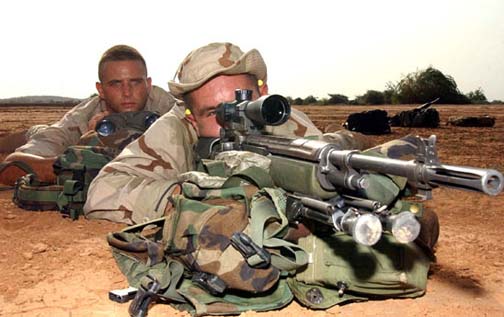
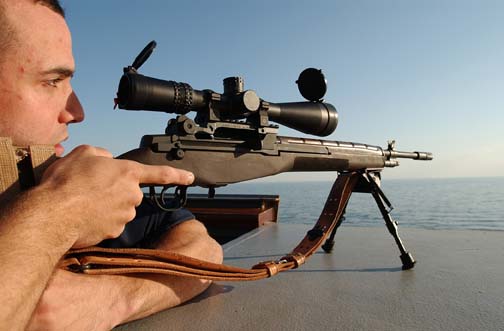
Type Sniper rifle
Place of origin United States
Service history
In service 1969–1988
Used by United States
Production history
Designer Army Weapons Command,
Combat Development Command,
Limited Warfare Agency
Designed 1969
Manufacturer Rock Island Arsenal, Springfield Armory
Variants M25
Specifications
Weight 5.27 kg (11.6 lb)
Length 1118 mm (44 in)
Barrel length 560 mm (22 in)
Cartridge 7.62x51mm NATO
Action Gas-operated, rotating bolt
Muzzle velocity 853 m/s (2,800 ft/s)
Effective range 690 m (750 yd)
Feed system 5, 10 or 20-round detachable boxmagazine
Sights Front: National Match front blade .062
Rear: Match-grade hooded aperture with one-half minute adjustments for both windage and elevation.
26 3/4 in sight radius.
No 6. PSG1 (German)

Type Sniper rifle
Place of origin West Germany
Service history
In service 1972-present
Used by Germans
Production history
Designer Heckler & Koch GmbH
Designed 1970s
Manufacturer Heckler & Koch GmbH
SEDENA (licensed)
Produced 1972–present
Variants PSG1A1, MSG90, MSG90A1
Specifications
Weight 7.2 kg (15.87 lb)
Length 1,230 mm (48.4 in)
Barrel length 650 mm (25.6 in)
Width 59 mm (2.3 in)
Height 258 mm (10.2 in) with telescopic sight
Cartridge 7.62x51mm NATO
Action Roller-delayed blowback
Muzzle velocity 868 m/s (2,848 ft/s)
Effective range 800 m
Feed system 5- or 20-round detachable box magazineor 50-round drum
Sights Hendsoldt ZF6x42PSG1 telescopic sightwith illuminated reticle
No 5. Dragunov SVD (Soviet Union)
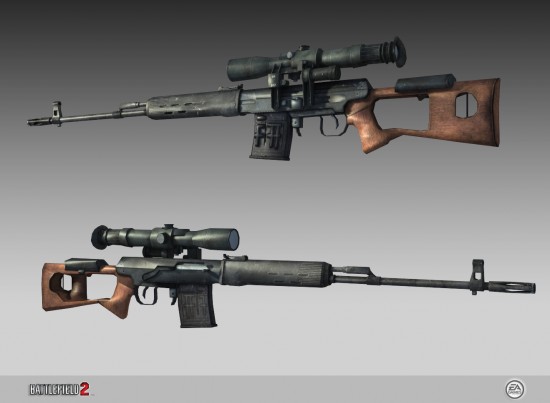
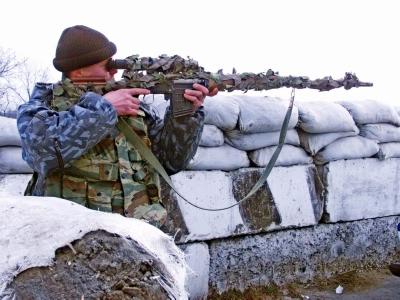
Type Sniper rifle
Place of origin Soviet Union
Service history
In service 1963–present
Used by Russians
Wars Vietnam War,[1] Soviet war in Afghanistan, Iraq War, Yugoslav Wars,First and Second Chechen Wars, 2008 South Ossetia War
Production history
Designer Evgeny Dragunov
Designed 1958–1963
Manufacturer Izhmash, Norinco, Zastava Arms
Produced 1963–present[2]
Variants See Variants
Specifications
Weight 4.30 kg (9.48 lb) (with scope and unloaded magazine)[2]
4.68 kg (10.3 lb) (SVDS)
4.40 kg (9.7 lb) (SVU)
5.02 kg (11.1 lb) (SWD-M)
Length 1,225 mm (48.2 in) (SVD)[2]
1,135 mm (44.7 in) stock extended / 815 mm (32.1 in) stock folded (SVDS)
900 mm (35.4 in) (SVU)
1,125 mm (44.3 in) (SWD-M)
Barrel length 610 mm (24.0 in) (SVD, SWD-M)[2]
565 mm (22.2 in) (SVDS)
600 mm (23.6 in) (SVU)
Cartridge 7.62x54mmR[2]
Action Gas-operated, rotating bolt
Muzzle velocity 830 m/s (2,723 ft/s) (SVD, SVDS, SWD-M)
800 m/s (2,624.7 ft/s) (SVU)
Effective range Up to 800 m sight adjustments for point targets
Maximum range 1,300 m with scope
1,200 m with iron sights
Feed system 10-round detachable box magazine
Sights PSO-1 telescopic sight and iron sights with an adjustable rear notch sight
No 4. AS50 (Bristish)
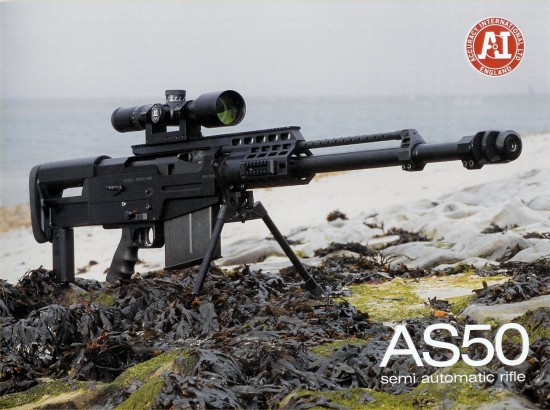
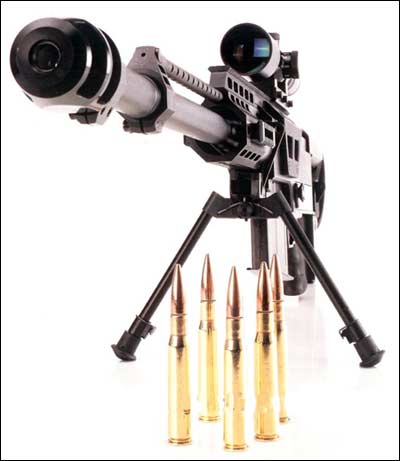
Type Anti-materiel rifle, Sniper rifle
Place of origin United Kingdom
Production history
Designed 2005 or 2006
Produced 2006
Number built Unknown
Variants 1 AS50
Specifications
Weight 27 lb (12.2 kg) (no scope/sight, empty mag)
Length 53.9″ (1369 mm)
Barrel length 692 mm
Cartridge 12.7 x 99 mm NATO
Caliber 12.7 mm .50 BMG
Action Direct impingement[citation needed]
Rate of fire semi-automatic, estimated at 5 rounds/1.3 seconds
Effective range 1,500 m
Feed system 5 or 10 round detachable box magazine
-
04-17-2011, 09:17 PM #3
 Re: Top 10 Sniper Rifles
Re: Top 10 Sniper Rifles
No 3. Barrett .50 Cal (American)
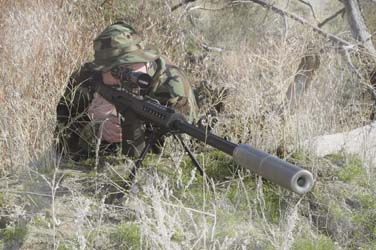
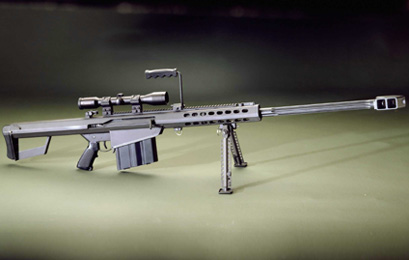
Type Sniper rifle
Place of origin United States
Production history
Manufacturer Barrett Firearms Company
Unit cost $3800-$4000
Specifications
Weight 25 lb (11.36 kg)
Length 50.4 in (1280 mm)
Barrel length 32 inches (813 mm)
Cartridge .50 BMG (12.7 × 99 mm),
.416 Barrett
Action Single Shot, Bolt Action
Maximum range 2600 Meters
No 2. Cheytac .408 cal (American)
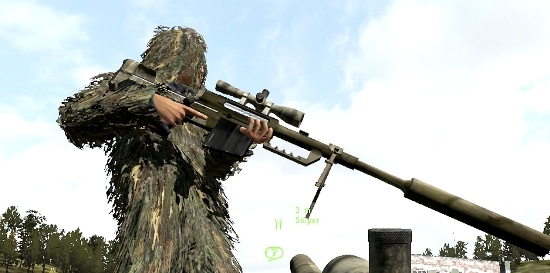
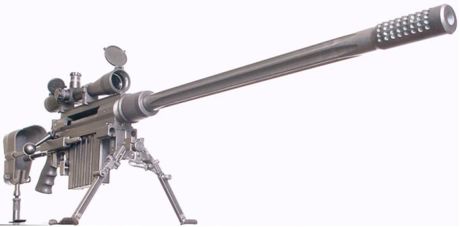
Type Rifle
Place of origin United States
Production history
Designer John Taylor and William O. Wordman
Designed 2001
Manufacturer Chey Tac
Produced 2001–present
Variants .375 Chey Tac
Specifications
Parent case .505 Gibbs
Case type Rimless, bottleneck
Bullet diameter .408 in (10.4 mm)
Neck diameter .438 in (11.1 mm)
Shoulder diameter .601 in (15.3 mm)
Base diameter .637 in (16.2 mm)
Rim diameter .640 in (16.3 mm)
Rim thickness .065 in (1.7 mm)
Case length 3.04 in (77 mm)
Overall length 4.307 in (109.4 mm)
Case capacity 159 gr H2O (10.335 cm³)
Rifling twist 1 in 13 in (330.2 mm)
Primer type Large Rifle
Maximum pressure 63,800 psi (440 MPa)
Ballistic performance
Bullet weight/type Velocity Energy
305 gr (19.8 g) Solid 3,500 ft/s (1,100 m/s) 8,298 ft·lbf(11,251 J)
419 gr (27.2 g) Solid 3,000 ft/s (910 m/s) 8,376 ft·lbf(11,356 J)
Source: Cartridges of the World
No 1. L115A3 AWM (British)
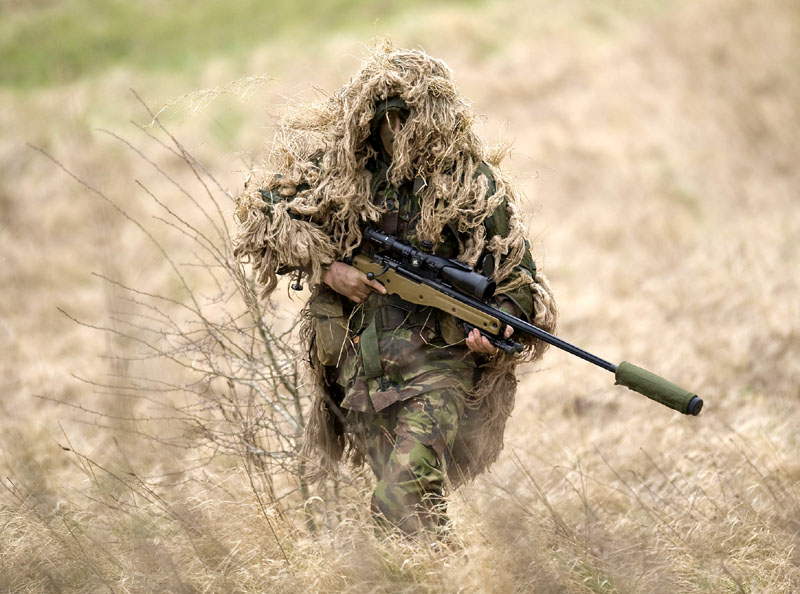
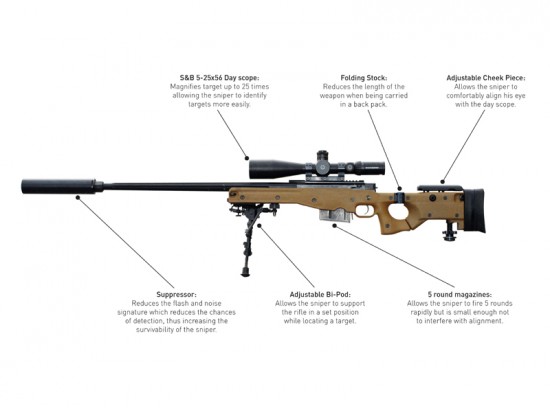
Type Sniper rifle
Place of origin United Kingdom
Service history
In service 1997 – present
Used by See Users
Wars Afghanistan War, Iraq War
Production history
Manufacturer Accuracy International
Specifications
Weight 6.5 kg (14.3 lb) (.300 Winchester Magnum)
6.9 kg (15.1 lb) (.338 Lapua Magnum)
with stock, bipod and empty magazine
Length 1200 mm (47.2 in) (.300 Win. Mag.)
1230 mm (48.4 in) (.338 Lapua Magnum)
Barrel length 660 mm (26 in) (.300 Win. Mag.)
686 mm (27 in) (.338 Lapua Magnum)
Cartridge .300 Winchester Magnum
.338 Lapua Magnum
Action Bolt-action
Effective range 1,100 metres (1,203 yd)
.300 Winchester Magnum[1]
1,400 metres (1,531 yd)
.338 Lapua Magnum[1]
Feed system 5-round detachable box magazine
Sights detachable aperture type iron sights
day or night optics
-
04-18-2011, 02:59 AM #4
 Re: Top 10 Sniper Rifles
Re: Top 10 Sniper Rifles
nice one sir..............again.....

anyway, i'm just wondering why there are no news about sniper-action........unlike in the part-fiction Enemy at the Gates.......nga murag celebrity si vasilli......
kabantay mo? murag puros infantry and all the other things....
-
04-18-2011, 12:27 PM #5
-
04-18-2011, 01:35 PM #6
-
04-18-2011, 02:06 PM #7
-
04-18-2011, 02:22 PM #8
-
04-18-2011, 02:31 PM #9
-
04-18-2011, 02:31 PM #10
 Re: Top 10 Sniper Rifles
Re: Top 10 Sniper Rifles
bro ang M24 og M40 ge buhat gikan ana...
M24
M40
from wikipedia:
Both the U.S. Army's M24 Sniper Weapon System and U.S. Marine Corps' M40 sniper rifles are built from the Remington Model 700 rifle, in different degrees of modification, the main difference being the custom fitted heavy contour barrel. The M24 uses the long action bolt-face, whereas the M40 uses the short action. The reason for this difference is that the M24 was originally intended to chamber the longer .30-06 round.
Reference: Remington 700 - Wikipedia, the free encyclopedia
Advertisement
Similar Threads |
|





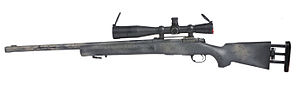
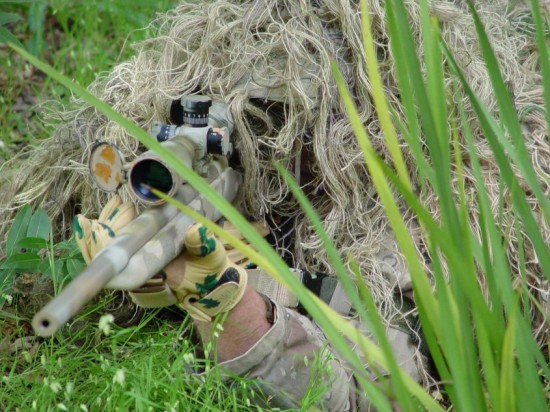
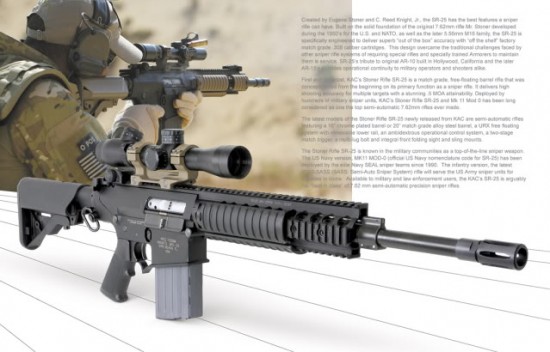


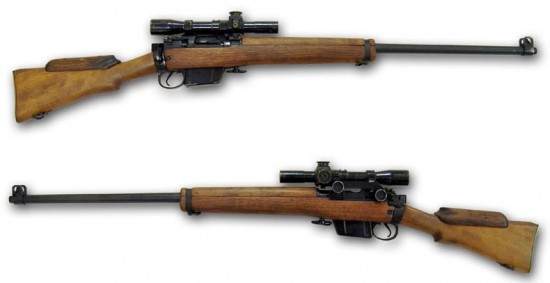

 Reply With Quote
Reply With Quote


